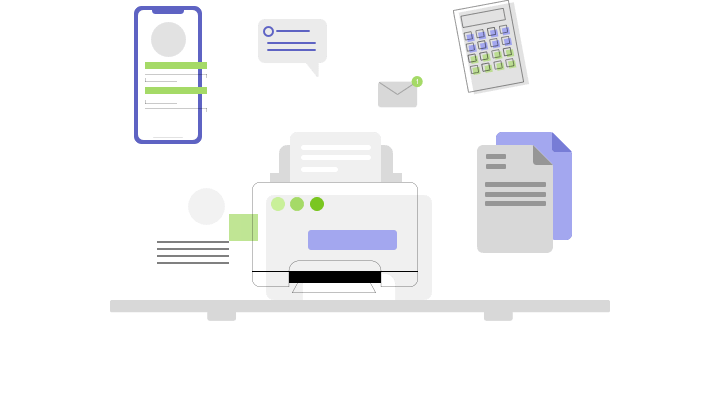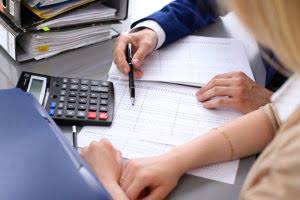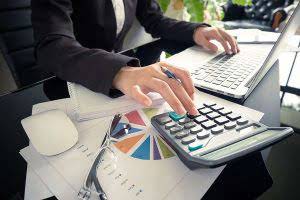Content
- What Is The Accumulated Depreciation Formula?
- How Do You Know If Something Is A Noncurrent Asset?
- The Top 25 Tax Deductions Your Business Can Take
- Macrs Depreciation
- Where Does Accumulated Depreciation Go On The Balance Sheet?
- Fixed Assets Ias : Definition, Recognition, Measurement, Depreciation, And Disclosure
- What Does Accumulated Depreciation Mean?

For example, a depreciation expense of 100 per year for five years may be recognized for an asset costing 500. Depreciation has been defined as the diminution in the utility or value of an asset and is a non-cash expense. It does not result in any cash outflow; it just means that the asset is not worth as much as it used to be. Depreciation is thus the decrease in the value of assets and the method used to reallocate, or ”write down” the cost of a tangible asset over its useful life span.

To find Year 2, subtract the total depreciation expense from the purchase price ($50,000 – $8,000) and follow the same formula. Accumulated depreciation is important because it can help businesses decide how to invest and budget funds since an asset’s accumulated depreciation affects its value. Similarly, accumulated depreciation provides valuable insight into a company’s capital gains and losses when it sells or stops operating an asset. The accumulated depreciation of an asset is also necessary to determine the taxable gain on the sale of an asset. If an asset is sold or disposed of, the asset’s accumulated depreciation is removed from the balance sheet.
What Is The Accumulated Depreciation Formula?
This post will help you understand what accumulated depreciation means and how you can calculate it to simplify your bookkeeping. Accumulated depreciation is a direct result of the accounting concept of depreciation. Depreciation is expensing the cost of an asset that produces revenue during its useful life.
- The amount of accumulated depreciation for an asset will increase over time, as depreciation continues to be charged against the asset.
- If you’re going to use this method of depreciation, expect to have equal monthly depreciation expense in regards to the asset.
- When recording depreciation in the general ledger, a company debits depreciation expense and credits accumulated depreciation.
- In accounting, we refer to the deterioration of assets as depreciation.
- Besides diminishing the original acquisition value of an asset from wear and tear, accumulated depreciation has massive importance.
- Its depreciable cost equals $15,000, or $25,000 minus the $10,000 salvage value.
During the current period to the depreciation at the beginning of the period while deducting the depreciation expense for a disposed asset. Credit BalanceCredit Balance is the capital amount that a company owes to its customers & it is reflected on the right side of the General Ledger Account. Usually, Liability accounts, Revenue accounts, Equity Accounts, Contra-Expense & Contra-Asset accounts tend to have the credit balance. We will also discuss how the accumulated depreciation is calculated for these two methods. Subtract the asset’s salvage value from its total cost to determine what is left to be depreciated. Bench gives you a dedicated bookkeeper supported by a team of knowledgeable small business experts. We’re here to take the guesswork out of running your own business—for good.
How Do You Know If Something Is A Noncurrent Asset?
Depreciation is recorded to tie the cost of using a long-term capital asset with the benefit gained from its use over time. IAS 16 Property, Plant and Equipment requires impairment testing and, if necessary, recognition for property, plant, and equipment. An item of property, plant, or equipment shall not be carried at more than recoverable amount. Recoverable amount is the higher of an asset’s fair value less costs to sell and its value in use.
Depreciation expenses appear on the income statement during the recording period, while accumulated depreciation shows up on the balance sheet under related capitalised assets. You’ll note that the balance increases over time as depreciation expenses are added. Accumulated depreciation can be defined as the total amount of depreciation for a fixed asset that is charged to expense since that asset was acquired and made available for use. This means it is a negative asset account that offsets the balance in the asset account to which it is usually linked. Small businesses have fixed assets that can be depreciated such as equipment, tools, and vehicles. For each of these assets, accumulated depreciation is the total depreciation for that asset up to and including the current accounting period. Accumulated depreciation is the total amount an asset has been depreciated up until a single point.
This notion plays hand in hand with depreciation itself and is vital to understand if you’re looking to grow your business. Current assets are not depreciated because of their short-term life. We’ll take a closer look at what this means below, starting with what the accumulated depreciation account is called. We’ll do one month of your bookkeeping and prepare a set of financial statements for you to keep. To illustrate, here’s how the asset section of a balance sheet might look for the fictional company, Poochie’s Mobile Pet Grooming. Because your Accumulated Depreciation account has a credit balance, it decreases the value of your assets as they increase. The remaining book value of an asset is its original cost minus the depreciation it has accumulated to date.

Depreciation calculations require a lot of record-keeping if done for each asset a business owns, especially if assets are added to after they are acquired, or partially disposed of. However, many tax systems permit all assets of a similar type acquired in the same year to be combined in a ”pool”.
The Top 25 Tax Deductions Your Business Can Take
And then divided by the number of the estimated useful life of an asset. In other ways, accumulated depreciation is calculated by the sum of all of the depreciation charges to assets from the beginning up to the latest reporting period. Besides diminishing the original acquisition value of an asset from wear and tear, accumulated depreciation has massive importance. It can help determine where your business chooses to invest its money, as a particular asset’s value will be affected by its accumulated depreciation. It also helps determine capital gains or losses when an asset is sold or retired. Leo’s Trucking Company purchases a new truck for $10,000 on the first of the year. Leo estimates that the truck will last for 5 years before it is completely worthless and needs to be disposed.
Accumulated depreciation is deducted from the original cost of an asset. It is deducted from the original cost of an asset and is a negative balance on the balance sheet. Depreciation for intangible assets is called amortization, and businesses record accumulated amortization the same as accumulated depreciation. The balance sheet provides lenders, creditors, investors, and you with a snapshot of your business’s financial position at a point in time. Accounts like accumulated depreciation help paint a more accurate picture of your business’s financial state.
Each period, the depreciation expense recorded in that period is added to the beginning accumulated depreciation balance. An asset’s carrying value on the balance sheet is the difference between its historical cost and accumulated depreciation. At the end of an asset’s useful life, its carrying value on the balance sheet will match its salvage value. Accumulated depreciation is a repository for depreciation expenses since the asset was placed in service. Depreciation expense gets closed, or reduced to zero, at the end of the year with other income statement accounts. Since accumulated depreciation is a balance sheet account, it remains on your books until the asset is trashed or sold. A lot of people confusedepreciationexpense with actually expensing an asset.
Your bookkeeping team imports bank statements, categorizes transactions, and prepares financial statements every month. For tax purposes, the IRS requires businesses to depreciate most assets using the Modified Accelerated Cost Recovery System .
Macrs Depreciation
The depreciable amount should be allocated on a systematic basis over the asset’s useful life [IAS 16.50]. As a rule of thumb, analyze the balance sheet for you to proceed with making the calculation. Our priority at The Blueprint is helping businesses find the best solutions to improve their bottom lines and make owners smarter, happier, and richer.
Accumulated depreciation is a contra asset account, meaning its natural balance is a credit that reduces the overall asset value. To make sure your spreadsheet accurately calculates accumulated depreciation for year five, recalculate annual depreciation expense and sum the expenses for years one through five. When you first purchased the desk, you created the following depreciation schedule, storing everything you need to know about the purchase. Like most small businesses, your company uses the straight line method to depreciate its assets.
One half of a full period’s depreciation is allowed in the acquisition period . United States rules require a mid-quarter convention for per property if more than 40% of the acquisitions for the year are in the final quarter. The group depreciation method is used for depreciating multiple-asset accounts using a similar depreciation method.
For this reason, the type of assets that accumulate depreciation are assets that are capitalized. Capitalized assets are used in a company’s business operations to generate revenue for more than a single year and are not meant to be sold during the ordinary course of business. Since the accumulated account is a balance sheet account, it is not closed at the end of the year and the $2,000 balance is rolled to the next year. At the end of year two, Leo would record another $2,000 of expense bringing the accumulated total to $4,000. This annual entry would be recorded every year until the truck is fully depreciated. In other words, the accumulated account equals the fixed asset account. The declining balance method is essential for recognizing most of an asset’s depreciation early in its usable life.
Where Does Accumulated Depreciation Go On The Balance Sheet?
Two of the most popular depreciation methods are straight-line and MACRS. There’s no standard formula for calculating accumulated depreciation. Still, there are two methods primarily used for the calculation – straight line and double-declining balance.

Under this method, the cost of the asset is depreciated evenly over its useful life. As you can see from the above illustration, the cost of the asset and its corresponding https://www.bookstime.com/ are presented as a single line item. As the asset ages, its corresponding accumulated depreciation account increases. Other methds include the declining balance method, and sum-of-the-year’s digits . You won’t see ”Accumulated Depreciation” on a business tax form, but depreciation itself is included, as noted above, as an expense on the business profit and loss report. You can count it as an expense to reduce the income tax your business must pay, but you didn’t have to spend any money to get this deduction.
Kirsten Rohrs Schmitt is an accomplished professional editor, writer, proofreader, and fact-checker. She has expertise in finance, investing, real estate, and world history. Kirsten is also the founder and director of Your Best Edit; find her on LinkedIn and Facebook. Deloitte refers to one or more of Deloitte Touche Tohmatsu Limited (”DTTL”), its global network of member firms and their related entities. DTTL (also referred to as ”Deloitte Global”) and each of its member firms are legally separate and independent entities. The revaluation surplus, including changes during the period and any restrictions on the distribution of the balance to shareholders.
Purchase price allocation may be required where assets are acquired as part of a business acquisition or combination. Common sense requires depreciation expense to be equal to total depreciation per year, without first dividing and then multiplying total depreciation per year by the same number. This article is about the concept in accounting and finance involving fixed capital goods. For economic depreciation, see Depreciation and Fixed capital § Economic depreciation. For year 1, Byron must recognize a total depreciation expense of $22,500.
The tax law or regulations of the country specifies these percentages. Capital allowance calculations may be based on the total set of assets, on sets or pools by year or pools by classes of assets… When an asset is sold, debit cash for the amount received and credit the asset account for its original cost.
Basically, accumulated depreciation is the amount that has been allocated to depreciation expense. During the later years of the machinery’s lifespan, the company credits a lower depreciation value because it’s paying a majority of the depreciation expense early on after acquiring the asset. Assume that a company purchased a delivery vehicle for $50,000 and determined that the depreciation expense should be $9,000 for 5 years. Each year the account Accumulated Depreciation will be credited for $9,000. Since this is a balance sheet account, its balance keeps accumulating. Therefore, after three years the balance in Accumulated Depreciation will be a credit balance of $27,000 and the vehicle’s book value will be $23,000 ($50,000 minus $27,000).
Accumulated Depreciation And Book Value
One such cost is the cost of assets used but not immediately consumed in the activity. Depreciation is any method of allocating such net cost to those periods Accumulated Depreciation in which the organization is expected to benefit from the use of the asset. Depreciation is a process of deducting the cost of an asset over its useful life.